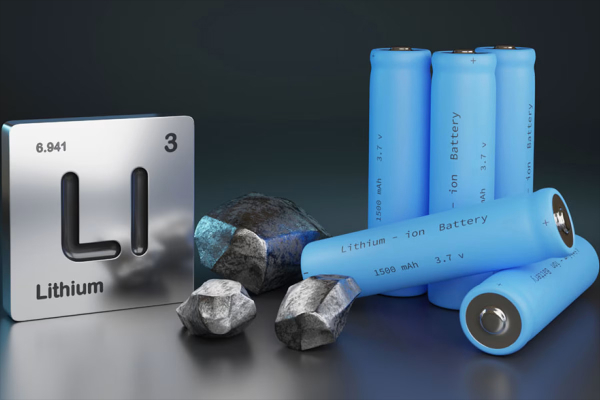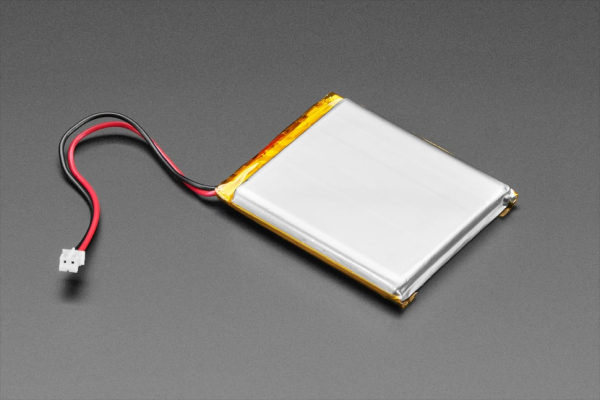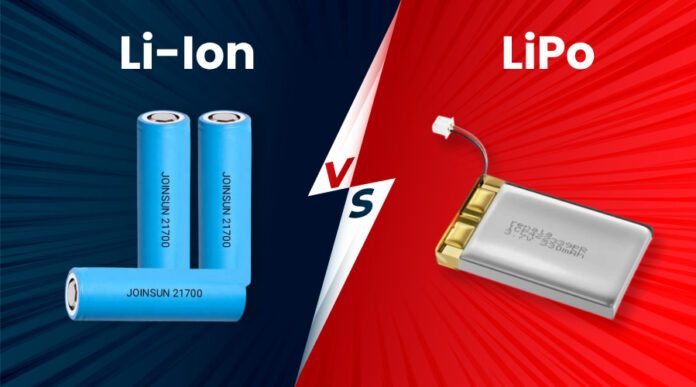Smartphone performance has improved over the years, which is great. Having said that, we still have the same issue of poor battery life that concerns many users. Whether you are into playing the latest games, scrolling through social media, or are a professional photographer taking thousands of pictures, the battery is what puts the brakes on how much time you can stay connected. Presently, we have Li-Ion and LiPo battery technologies in mobile phones. Though both are lithium batteries, they work on different mechanisms with their own advantages and disadvantages.
To find out which smartphone battery type is best for you, read this blog to explore important differences between Li-Ion and Li-Po. Explore the advantages and disadvantages to identify the right battery type based on your average usage patterns.
Lithium-ion vs Lithium-polymer Batteries: What’s the Difference?
Lightweight rechargeable qualities of Li-Ion and LiPo batteries make them perfect choices for small gadgets such as smartphones. Despite similarities, both types of batteries possess distinct chemical structures and physical formats with varied operational properties. Refer to the table to understand the basic difference between the two battery technologies.
| Feature | Li-Ion Battery | LiPo Battery |
|---|---|---|
| Electrolyte State | Liquid | Gel or solid polymer |
| Shape & Size Flexibility | Rigid, fixed shapes | Flexible, customizable shapes |
| Energy Density | Higher | Slightly lower |
| Durability | Generally more durable | More fragile |
| Cost | Lower | Higher |
| Weight | Heavier | Lighter |
| Risk of Swelling | Lower | Higer |
| Common Usage | Most smartphones, laptops | Drones, RC devices, and some phones |
Li-Ion Battery
The rechargeable Li-Ion battery has become the preferred power solution for consumer electronics such as smartphones, laptops, tablets, as well as other electronic devices. The batteries use liquid electrolytes to function through lithium ion movements between their anode and cathode elements during charge and discharge operations. Li-Ion batteries contain a high energy density as they pack a big power capacity into relatively small dimensions.

Furthermore, the batteries feature internally integrated protection mechanisms to stop overcharging and overheating events that enhance both safety operations and battery lifespan. Manufacturers favor Li-Ion for their balance between capacity, stability, and cost.
Pros:
- High Energy Density: The technology stores more energy in compact spaces, enabling users to enjoy extended operation time at the same battery size.
- Stable Performance: Reliable voltage output and effective energy transfer, crucial for high-performance smartphones.
- Less Costly: Manufacturing prices are lower in relation to regular batteries, hence more cost-cutting across the supply chain.
- Longer Cycle Life: These batteries deliver 300 to 500 full cycles and hold their capacity levels without noteworthy degradation.
- Low Self-Discharge: The charge ability is high even without using the device, hence making intermittent use dependable.
- Widespread Availability: An optimally developed supply chain offers effective replacement and repair facilities.
Cons:
- Fixed Shape: The rectangular form factor limits phone design options and innovation.
- Thermal Runaway Risk: Can overheat or even catch fire if physically damaged or overcharged.
- Gradual Degradation: Loses capacity over time, especially under high temperature or frequent deep discharges.
- Moderate Charging Speed: Fast but not as fast as some LiPo counterparts.
LiPo Battery
The advancement of modern lithium-based power technology has given rise to Lithium-polymer (LiPo) batteries. The solid or gel-like polymer electrolyte in LiPo batteries allows creators to build more flexible designs with extremely thin housing structures. Modern smartphone manufacturers choose LiPo batteries as they create compact devices that retain high power capacity. These batteries provide exceptional burst current service and make them useful for gaming phones and drones. LiPo batteries possess low leakage potential due to their design, while offering support for fast charging capabilities. However, they are more expensive to produce and more sensitive to damage and wear.

Pros:
- Flexible Form Factor: Ultra-thin, flat, and curved equipment designs become possible with such lithium-ion batteries.
- Lightweight: The exceptional power-to-weight relationship produces lightweight devices.
- Fast Charging Capability: These batteries provide fast charging capabilities, which benefit users who require rapid power replenishment.
- Lower Risk of Electrolyte Leakage: The gel or solid polymer electrolyte shows better leak resistance than its liquid counterpart.
- High Discharge Rates: Gives faster power supply that benefits devices needing immediate power bursts.
Cons:
- Higher Cost: Manufacturing and replacement of these batteries prove to be costlier, thus influencing the ultimate price of the device.
- Shorter Lifespan: A battery of this kind supports 200–400 charge cycles on average but experiences faster capacity loss than Li-Ion.
- Prone to Swelling: Puffs or swells over time, especially with improper charging or overheating.
- Delicate Construction: More prone to physical damage or puncture, which can be dangerous if mishandled.
- Limited Durability in Extreme Conditions: Performs poorly in very hot or cold environments compared to Li-Ion.
Which Battery to Choose: Factors to Consider
The following factors determine what makes a suitable battery choice for smartphones:

1. Battery Capacity (mAh)
The capacity of a battery ranks as one of its essential characteristics that manufacturers present through the units mAh or milliamp hours. The metric shows the total capacity that battery cells can hold. The number of mAh power your device stores will determine how long you can go between charging your phone. A device with a 5,000 mAh battery can perform better than a high-capacity powered device with poor optimization levels.
2. Charging Speed
Smartphone users currently place high importance on fast charging capabilities in their devices. Users now seek mobile phones equipped with fast charging capabilities that include Qualcomm Quick Charge and USB Power Delivery with proprietary standards such as VOOC and Warp Charge. The speed at which you charge your phone determines its refill time, from under one hour to several hours, according to charging power levels ranging from 30W to 100W. Quick charging is possible with LiPo batteries, but their longer-lasting reliability suffers because of this capability.
3. Battery Lifecycle
The number of complete cycles during charge and discharge determines how a battery ages, which becomes evident when its capacity reduces to 80% or less of its initial value. The longer lifespan of Li-Ion batteries makes them perfect for users who plan to use their phones beyond multiple years. Powerful and compact LiPo batteries experience decreased capacity more rapidly than other options.
4. Heat Management
Batteries decline rapidly when they encounter high temperatures. High temperatures accelerate the degradation process of lithium batteries and simultaneously trigger swelling and safety hazards. Li-Ion batteries maintain better thermal resistance properties when used with smart battery control systems.
5. Safety Features
The latest battery generation has built-in protection circuits that protect them from damage caused by overcharging, short circuits, overheating, and over-discharging conditions. The Li-Ion battery provides excellent endurance qualities along with superior resistance to swelling and puncture versus LiPo.
6. Usage Pattern
The selection of a suitable phone battery depends on your mobile usage patterns. People who use their devices intensively should buy phones equipped with large Li-Ion power cells that provide heat protection. Users requiring lightweight cell phones for basic calls find LiPo batteries suited because of their flexible design features.
Conclusion
Both Li-Ion Battery and LiPo battery are of good quality; however, which to choose depends on what you most care about – performance or construction. Li-Ion batteries are less expensive and more durable, however, they are more commonly used, and therefore are a good choice for everyday smartphone users.
The dominance of Li-Ion batteries remains strong because they offer reliable performance at affordable prices, although LiPo batteries seem set to replace them for future devices. Your understanding of which technologies excel or struggle in certain aspects enables you to make the right smartphone selection.

